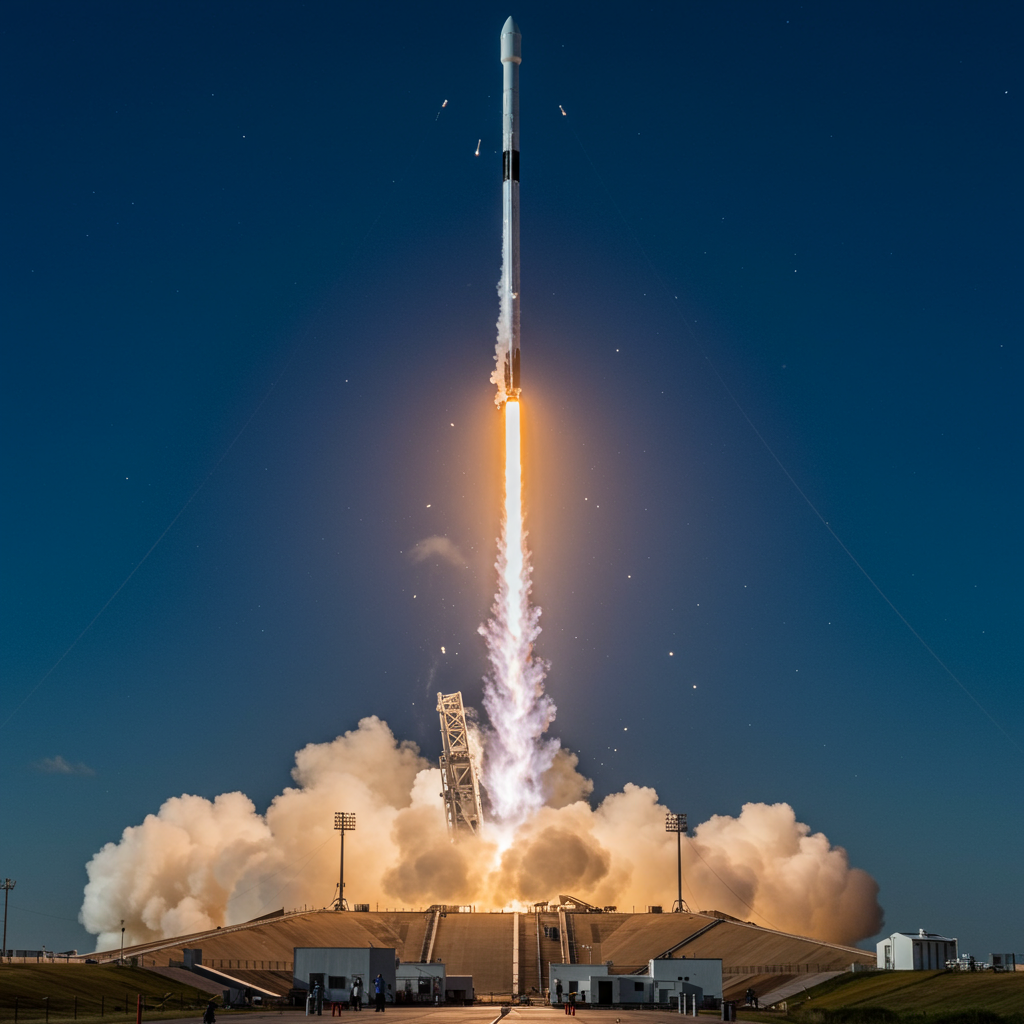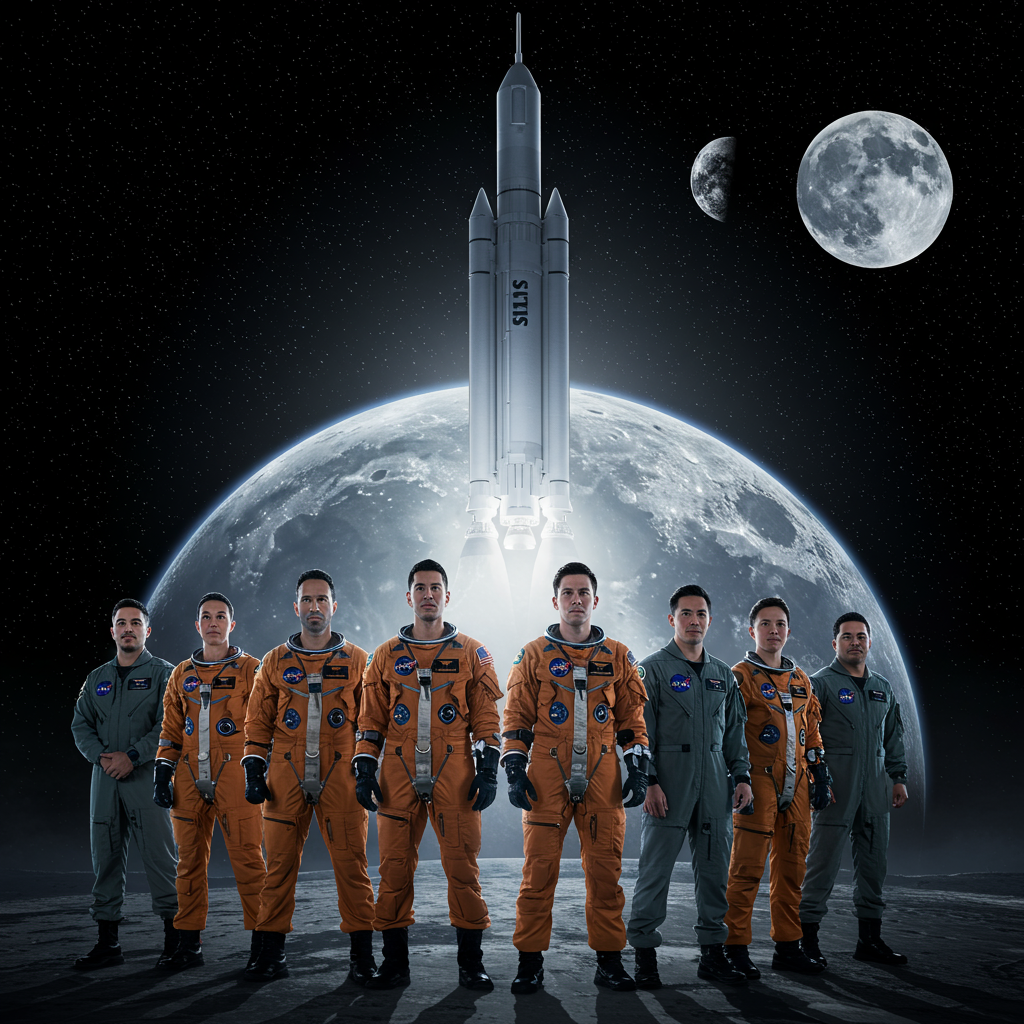Get ready for a landmark moment in human spaceflight! The SpaceX Crew-11 mission, a pivotal collaboration between NASA and SpaceX, is set to launch, sending four international astronauts to the International Space Station (ISS). This upcoming launch marks a significant first for space enthusiasts globally: it will be the inaugural NASA mission involving astronauts to be broadcast live on Netflix, alongside traditional platforms like Amazon Prime and NASA+. Discover everything you need to know about this exciting expedition, from launch times and crew details to how you can watch history unfold from the comfort of your home.
What Defines the Crew-11 Mission?
The Crew-11 mission represents a crucial chapter in space exploration. It is the eleventh operational crew rotation flight and the twelfth human spaceflight carried out under NASA’s highly successful Commercial Crew Program. This innovative program allows NASA to partner with private companies like SpaceX to transport astronauts and cargo to the ISS, freeing up the agency to concentrate on ambitious deep-space endeavors, including the Artemis lunar program and future crewed missions to Mars.
This isn’t just a routine crew swap. The Crew-11 mission carries notable significance, particularly following the highly publicized “Starliner saga.” The arrival of the Crew-11 contingent at the ISS will enable the departure of the Crew-10 astronauts. Their mid-March 2025 arrival at the orbital outpost played a critical role in facilitating the long-awaited return of astronauts Butch Wilmore and Suni Williams, who were aboard the Boeing Starliner space capsule. The Crew-11 mission ensures the continuous human presence on the ISS, vital for ongoing scientific research and operational continuity.
Key Launch Details: When and Where to Witness History
The Crew-11 mission is scheduled to lift off no earlier than Thursday, July 31, 2025, at 12:09 p.m. ET. The launch will originate from the historic Launch Complex 39A at NASA’s Kennedy Space Center in Florida, a site synonymous with iconic space missions.
SpaceX will use its Falcon 9 rocket, one of the world’s most active and reliable launch vehicles, to propel the crew into orbit. The astronauts will ride inside the Crew Dragon spacecraft, named Endeavour, a vessel uniquely designed by SpaceX to transport humans to and from the ISS. After a powerful liftoff, the Falcon 9 rapidly accelerates to approximately 17,500 miles per hour. The Dragon capsule then separates, using its own thrusters to precisely navigate its journey to the space station.
The journey to the ISS for Crew-11 will take approximately 39 hours. This extended transit time, longer than some recent crewed missions, is specifically designed to allow for optimal orbital alignment. Docking at the Earth-facing port of the ISS’s Harmony module is anticipated around 3:00 a.m. ET on Saturday, August 2, 2025. Following successful docking, the hatch opening is targeted for 4:45 a.m. ET, allowing the new crew to enter the station.
Interestingly, the launch date for Crew-11 was adjusted, moved up by about two weeks. This change was made to accommodate an essential ISS reboost maneuver, which will be performed by SpaceX’s upcoming CRS-33 robotic resupply mission. This coordination highlights the intricate ballet of spacecraft traffic around the ISS, ensuring smooth operations and avoiding potential conflicts.
Meet the International Crew-11 Astronauts
The Crew-11 mission will transport four highly skilled spacefarers, representing an international collaboration in space exploration:
Zena Cardman: Mission Commander (NASA)
As the mission commander, Zena Cardman, a NASA astronaut from Virginia, brings a unique background as a marine biologist. This mission marks her highly anticipated inaugural journey into space, showcasing NASA’s commitment to diverse scientific expertise aboard the ISS.
Mike Fincke: Pilot (NASA)
Pilot Mike Fincke, a seasoned NASA astronaut from Pennsylvania, is a veteran of three previous space missions. His return to the ISS is particularly notable as he previously played a role in assembling the station more than a decade ago, providing valuable insight and experience for the mission.
Kimiya Yui: Mission Specialist (JAXA)
Representing the Japan Aerospace Exploration Agency (JAXA), Kimiya Yui joins the crew as a mission specialist. With prior spaceflight experience, Yui will contribute significantly to the scientific research and maintenance tasks essential for the station’s operations.
Oleg Platonov: Mission Specialist (Roscosmos)
Oleg Platonov, a Roscosmos cosmonaut, will undertake his first journey to space as a mission specialist. His expertise will be crucial for conducting various scientific experiments and managing station systems throughout their stay.
Upon their arrival, the Crew-11 team will join the Expedition 73/74 mission, spending approximately six months aboard the orbital laboratory. Their comprehensive activities will include groundbreaking scientific research, essential maintenance tasks, and critical technology demonstrations.
Mission Objectives and Scientific Endeavors
The core objective of the Crew-11 mission is to continue the vital scientific research conducted aboard the International Space Station. For several months, the astronauts will perform experiments designed to yield significant benefits back on Earth, particularly those sponsored by the ISS National Lab. These investigations capitalize on the unique microgravity environment to explore new frontiers in biology, physics, materials science, and human health.
Beyond scientific pursuits, the Crew-11 mission maintains the continuous human presence that has been sustained on the ISS for nearly 25 years. This unbroken habitation is crucial for maximizing the research output and ensuring the station’s operational integrity. The Crew-11 astronauts will overlap with their predecessors, the Crew-10 contingent, for about a week. This critical handover period ensures a seamless transition of responsibilities, including ongoing experiments and station operations, before Crew-10 returns to Earth.
The Crew-10 astronauts, including NASA astronauts Nichole Ayers and Anne McClain, Japanese JAXA astronaut Takuya Onishi, and Roscosmos cosmonaut Kirill Peskov, will depart a few days after their replacements arrive. Their return journey will culminate in a splashdown and water landing off the coast of California.
How to Watch the Crew-11 Launch Live Across Platforms
Space enthusiasts and the general public have unprecedented access to the Crew-11 launch and subsequent mission events, with extensive live coverage planned across multiple streaming platforms.
NASA’s Official Coverage
NASA+ is the U.S. space agency’s free streaming platform, offering comprehensive coverage. You can access content through NASA+’s official website, its YouTube channel, and via its dedicated mobile app available for smartphones. Live launch coverage from NASA+ begins at 8:00 a.m. ET on Thursday, July 31.
Streaming Giants: Netflix and Amazon Prime
For the first time, a NASA mission involving astronauts will be broadcast live on Netflix. Viewers will need an active Netflix subscription to access NASA content on this popular platform. The live NASA+ feed will be integrated into the Netflix interface, appearing alongside other popular series.
NASA+ content has also been available on Amazon Prime’s live channels since May 2025. Crucially, Prime users can access this NASA coverage without requiring an additional subscription, making it widely accessible.
Additional Live Coverage
SpaceX will also provide its own live webcast of the launch on its @SpaceX account on X (formerly Twitter), typically starting an hour before liftoff. Furthermore, various space news websites, including Space.com, will offer live streams and updates.
Post-Launch and Docking Events
Following the launch, a post-launch news conference is scheduled for 1:30 p.m. ET on Thursday, July 31. This will be available primarily on NASA’s YouTube channel.
Coverage of Dragon’s approach and docking at the ISS will resume on NASA+ around 1:00 a.m. ET on Saturday, August 2. After successful docking and hatch opening, a welcome ceremony for the new crew aboard the ISS is set for 5:30 a.m. ET on August 2. NASA also offers a virtual guest program for those wishing to attend the launch virtually, providing curated resources and notifications. Engage on social media using #Crew11 and #NASASocial.
The Broader Impact: Why Crew-11 Matters for Future Exploration
The Crew-11 mission is more than just a logistical exercise; it underscores the ongoing evolution of commercial spaceflight and its profound impact on NASA’s long-term strategic objectives. By relying on private partners like SpaceX for routine ISS transportation, NASA can redirect significant resources and focus on its ambitious plans for human exploration of the Moon and eventually Mars.
The continuous human presence on the ISS, maintained by missions like Crew-11, is fundamental for advancing scientific knowledge. The unique microgravity environment allows for groundbreaking research that cannot be replicated on Earth, fostering innovations that benefit humanity across various fields. Furthermore, the use of resilient spacecraft like the Crew Dragon Endeavour, SpaceX’s most-flown Crew Dragon undertaking its sixth mission with enhancements like upgraded drogue parachutes, highlights advancements in reusable space technology. These developments contribute to the goal of making space travel more sustainable and cost-effective.
This mission also exemplifies the strength of international collaboration in space, with astronauts from multiple nations working together towards shared scientific goals. The Crew-11 launch represents another vital step in humanity’s journey of discovery, paving the way for a future where space is more accessible and its benefits more widespread.
Frequently Asked Questions
What makes the SpaceX Crew-11 mission significant?
The SpaceX Crew-11 mission is significant for several reasons. It marks the first time a NASA astronaut mission will be broadcast live on Netflix, expanding public access to space events. This mission also plays a crucial role in the ongoing rotation of astronauts aboard the International Space Station (ISS), facilitating the departure of the Crew-10 astronauts whose arrival previously helped resolve the “Starliner saga.” Furthermore, Crew-11 continues critical scientific research on the ISS, supporting NASA’s broader goals under the Commercial Crew Program and enabling focus on future lunar and Mars missions.
How can I stream the Crew-11 launch live?
You have multiple options to stream the SpaceX Crew-11 launch live. NASA+ offers free coverage via its official website, YouTube channel, and mobile app, starting at 8:00 a.m. ET on July 31, 2025. The mission will also be streamed live on Amazon Prime’s live channels (NASA+ content is accessible without a separate subscription for Prime users). For the first time, Netflix will also carry live NASA coverage of an astronaut launch, though a Netflix subscription will be required. SpaceX will provide its own webcast on X (formerly Twitter).
How long will the Crew-11 astronauts stay on the International Space Station?
The four astronauts of the Crew-11 mission are expected to remain aboard the International Space Station (ISS) for approximately six months. During their tenure, they will become part of the Expedition 73/74 mission, conducting a wide array of scientific research, performing essential maintenance tasks, and demonstrating new technologies in the microgravity environment. Their arrival will also involve a brief overlap period with the departing Crew-10, ensuring a smooth transition of duties and ongoing experiments.
The SpaceX Crew-11 launch is poised to be an unforgettable event, marking new frontiers in space exploration and public engagement. With unparalleled access across major streaming platforms, watching the Falcon 9 propel the Crew Dragon Endeavour and its crew towards the ISS has never been easier. Don’t miss this opportunity to witness the power of international collaboration and the relentless pursuit of scientific discovery. Set your alarms for Thursday, July 31, 2025, at 12:09 p.m. ET, and prepare to be inspired!




